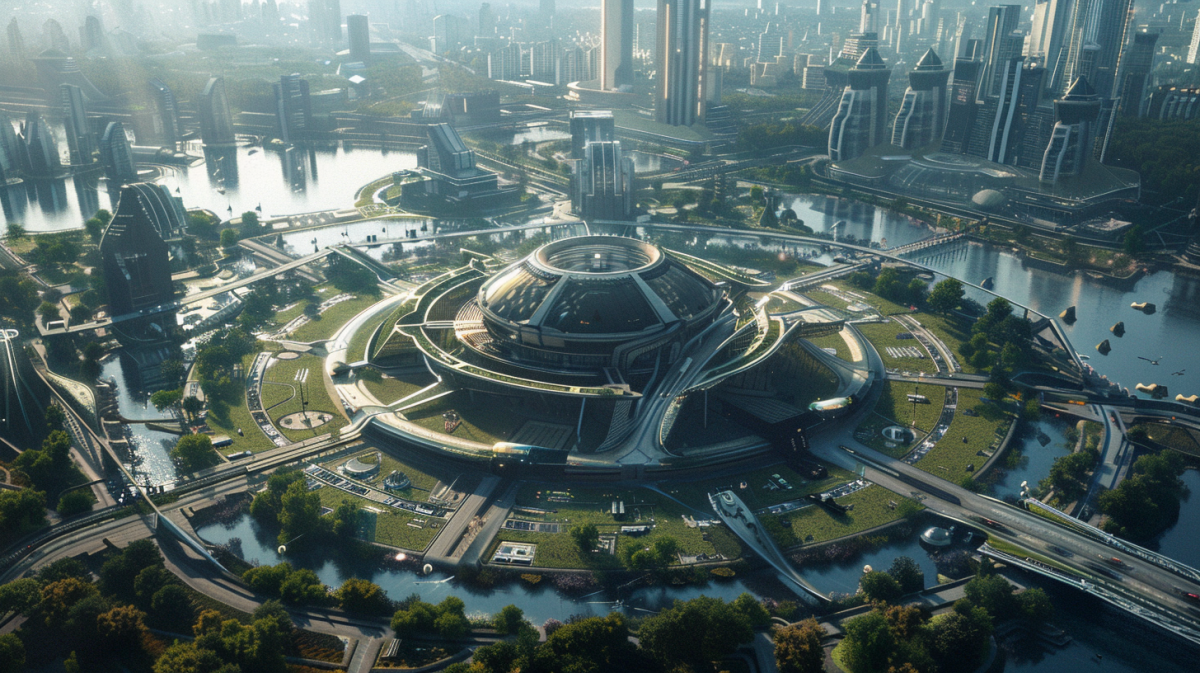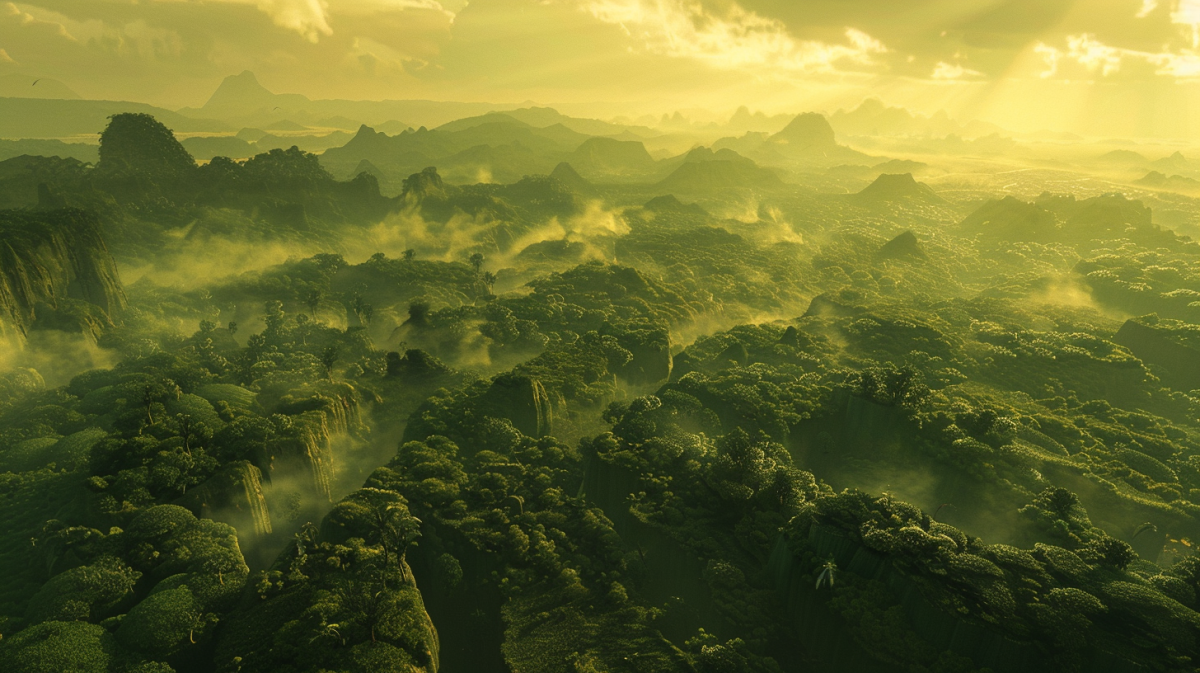Size: 72 square kilometers (12 x 6 km)
Population: None (Officially)
Also colloquially known as “The Park” or “City Park”, Pioneers Landing is the site of the first settlement on Gibson, and the landing site of the colony ships “Liberty”, “Equality”, “Justice”, and “Prosperity”. After the initial settlement was established, construction of an actual city – today’s Gibson City – began nearby. Colonists were soon moved into permanent housing, and most of the first settlement was torn down.
The area of the park was scheduled for development, but a wave of nostalgia and unexpected colonial patriotism led to the introduction of a bill to designate the area as the first National Park of the planet in the year 35. As the planet offered enough unclaimed land for centuries to come, the main contention was financing the park’s maintenance, and Pioneers Landing was left as-is to reduce cost.
The park was remodeled for the 50th anniversary of humanity’s arrival on Gibson, and used for the first modern Prosperity Day celebration the same year.
Since then, Pioneers Landing went through alternating phases of neglect and restoration and modernization; usually, it receives a lot of attention for “benchmark” holidays, every 25 years. The current administration, under President Adams, has committed enough funds to keep the park in “the beautiful condition it is today; safe, clean, and enjoyable for generations to come”.
Visitors are asked to be vigilant about pickpockets and other petty criminals.
Known For:
- Picturesque natural park, carefully restored to pristine, natural conditions while being a good representation of various terrain encountered by our Pioneer first generation settlers, and allowing easy access to all citizens. Mountainous terrain, forests, rivers, lakes, are all available within the confines of our great city.
- Various attractions, works of art, gardens, bridges, and monuments.
- Outdoor activities, including kayaking, kite-flying, hiking, picnics, and others. (Equipment and food available on premises.)
- Annual Prosperity Day celebration and parades.
- Squatter camps. These usually spring up in areas hidden from view, and the authorities will cleared them out promptly. If you encounter an illegal camp, please exercise caution and contact the park wardens’ office.
Distinguishing Features:
- Pioneers Museum, which documents and celebrates the colonial history of Gibson, and the achievements of first generation colonists. A permanent special exhibition is dedicated to the first settlers. The museum features genuine Pioneer and Old Earth artifacts, a reconstruction of a colony ship, and a Pioneer settlement built with authentic prefab shelters. It offers guided tours, augmented reality re-enactments, and the opportunity to live “the life of a pioneer” for a day.
- Reconstruction Pioneer settlement and other artifacts from early Gibson colonial history.
- Augmented reality guided tours about our history.
Two Local Legends:
- On dark nights, the ghosts of pioneer colonists that died during the early years following the initial landing haunt the park. They are generally benevolent, and are most likely to show themselves to people in danger or distress, but some are deranged and dangerous.
- Every year, several people go missing in Pioneers Landing National Park. Of course, there is really no mystery here – the park simply has its natural dangers, like all wilderness areas do. Rumors about more sinister causes for the disappearances are entirely unfounded.
- It’s been a while since I posted about Gibson. Essentially, it’s a colony world in the Perseus Arm, cut off from Earth. The climate is entirely too tropical to be comfortable. More information about Gibson can be found in my post history, or on my Gibson City website.
- For comparison: Pioneers Landing has an area of 17791 acres. Central Park has an area of 843 acres. South Mountain Park, in Phoenix, Arizona, with 16283 acres, is the modern-day urban park closest in size.
- The post format follows /u/JoelS90 “Design a District” worldbuilding challenge, which I used for Paradise Shores.
- From an in-universe perspective, these are probably part of a guidebook to Gibson City.
- Featured image: “Central Park – New York, NY, USA”, by Giorgio Galeotti. cc-by license.









